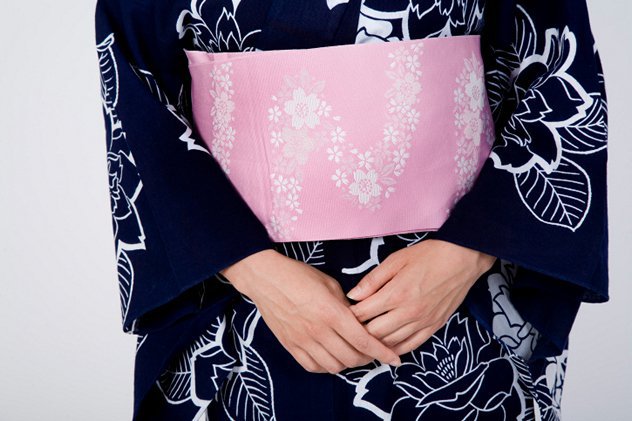Japanese Urban Legends – Shirokiya Department Store Deaths
In December 1932, the Shirokiya Department Store in Tokyo went up in flames. The fire tragically claimed the lives of 14 people. But the blaze is best remembered for the bizarre urban legend that surrounds the tragedy.
In the smoke and confusion, several female shop assistants had found their way to the roof of the building—eight floors up. Firefighters called for them to climb down the safety ropes. The women started their descent to safety, but, at the halfway point, a strong gust of wind disturbed them. All of the women were wearing kimonos and—as is tradition when wearing a kimono—no underwear. The women, fearing that the wind would expose and shame them in front of the growing audience below, let go of the rope to cover themselves. In doing so they plunged to their deaths.
Curiously, in the ensuing days, the board at the Shirokiya Department Store ordered all its female employees to wear underwear. The sales of Western-style panties soared.No one disputes that the fire was real. But are the deaths an urban legend or a true tragedy? Let’s have a look at a couple of facts. Kimonos are tightly bound, which makes the viewing of particular parts of the female anatomy almost impossible from below. Also, mixed-gender onsen—hot springs where men and women would sit together naked—were all the rage in Japan for years before the tragedy. That suggest that the idea of women feeling such shame was quite unlikely.Bizarrely, however, the Japanese firefighting manuals and textbooks document the deaths. What are we to learn from this? The next time you’re caught in a fire, make sure you’re wearing your undies.
At the time, the Shirokiya Department Store was having a year-end Christmas theme sale, and the interior was extravagantly decorated. The fire started around 9:15am, shortly before it was to open for business, in the toy section. A clerk witnessed an electrical spark from a light bulb on a Christmas tree. The spark landed on some highly flammable celluloid toys, ignited them, and the fire quickly spread. The open staircase provided oxygen to fuel the flames and enabled the fire to spread to other floors. The staircase became a chimney for the smoke, which cut off the main escape route.
As ladder trucks and hoses could not reach the 5th floor, the fire spread and people trapped inside had to find other ways to escape. Some of the saleswomen were forced to go up to the roof; from there they jumped into safety nets held by firemen. Many attempted to escape the building using ropes made from clothing or curtains. About 80 people climbed down from the 7th floor in this manner. Others could not hang on and fell to their deaths.
It is believed that this fire changed fashion customs among Japanese women, who discarded the traditional kimono since kimono-clad women did not wear panties. News spread that during the fire, saleswomen in kimono refused to jump from the roof into safety nets because they were ashamed to be seen from below, and as a result died. This news attracted attention from as far away as Europe. It has been alleged that in the aftermath of the fire, department store management ordered saleswomen to wear panties or other short underwear under their kimono, and the trend spread.
Contrary to this belief, Shoichi Inoue, a professor of Japanese customs and architecture at the International Research Center for Japanese Studies, has denied the story of the ambivalent women with fatal modesty. According to Inoue, most people were saved by firemen, and the story of women who preferred to die with their modesty intact was fabricated for the benefit of Westerners. The story has been prevalent in many reference books, even some published by the Fire Fighting Agency. It is generally believed in Japan that the Shirokiya Department Store fire was a catalyst for the change in fashion customs, specifically the trend toward wearing Western-style panties, though there is no evidence to substantiate the belief.

Kimono consist of several layers of silk robe. The bottom layer was once considered underwear. However, being a robe it’s open at the bottom. Shoichi Inoue alleges that the story spread first to Europe and then back to Japan. This makes sense. In the 1930s, various Western nations were applying pressure on Japan to Westernize and become a Christian nation. Certain people were unhappy about silk robes that didn’t fit Western ideas about underwear.
The modern myth goes on to say that women’s underwear sales jumped the next day — the tragedy is the whole reason Japanese women started wearing western undergarments.Wherever the story originated — it makes no sense. Firstly, kimono are tight and long with many layers of robes. You could easily jump from a 7 storey building without suffering modesty problems.
Well, this is a mere urban myth, counters Professor Shoichi Inoue. According to him, the female workers at Shirokiya’s were escaping from the disaster by the skin of their teeth. They simply could not afford to pay attention to curious spectators. He argues that women back then were used to publicly exposing themselves, so that they must have been quite insensitive to onlookers. There are some stories to support his postulation: on the way back from their groceries, when caught by a gust of wind, most women rather held tightly onto their shopping bags than clasping the bottom of their kimono to avoid it being lifted. Also, it was a common to see women clad in kimono casually stepping over someone lying on the floor. More shockingly even, up until the beginning of 1960s, in farming villages, women were working on the fields with their kimono gathered up around their waist, and people often saw them urinating standing on footpaths between the rice paddies in bright day light. From these stories we can conclude that women back in the days of koshimaki clearly did not have the same level of physical shame as women nowadays. They seemed to have accepted self-exposure as an inevitable daily practice.
Then, where did this myth originate from? To sum up Prof. Inoue’s findings:
As opposed to the female clerks on the upper floors, the employees on the lower floors of the Shirokiya department store on the day of the disaster might have actually paid more attention to the onlookers on the street. It is possible that the stories of both groups were somehow confused in later accounts of the event.
When interrogated, Shirokiya’s security personnel might have attempted to dodge their responsibility by claiming that “the dead employees had failed to escape by jumping the net, because they were not wearing any underwear”. It is possible that these statements were later conveyed in an exaggerated fashion.
Irrelevant to the Shirokiya inferno, it was the time when female fashion was transitioning from Japanese to Western style. It was only a trend, but the Shirokiya fire just so happened during those times of social transformation.

The legend of “women without underwear plummeting to death due to their tremendous sense of shame” would easily stick to everyone’s mind and became an urban myth of sorts.
So, that’s that. Yet, some questions remain. What was the actual reason that modern underwear gained so much popularity and prevailed among Japanese women? When and how did that happen? Since when did women start developing a sense of shame about self-exposure?
It was not until the late 1950s that modern underwear started playing its predominant role in Japan. In the Meiji era, Western
culture started to pour into Japan. Along came Western attire, with undergarment called “drawers” (ズロース, see picture below). However, Western clothing did not take off immediately, it was only worn by the wealthy. Commoners still preferred kimono, hence koshimaki retained their importance.
In the Taisho era, Western clothes gained more popularity due to the introduction of uniforms at girls’ schools, and female
empowerment, resulting in women tapping into the world of business. Western style clothes were preferred as they offered women more mobility. Thus, drawers became more common among women, yet not by a great degree, as women still did not feel comfortable with garment snug around their private parts.
In 1939, when World War II broke out, monpe (もんぺ), loose trousers with a drawstring around each ankle, were promoted for women (see picture below). Since they could not wear koshimaki under these trousers, women had no choice but to wear drawers. Thus, the ratio of underwear usage dramatically increased among women. However, when the war ended, Japan went into extreme poverty, and the only women who could afford to wear drawers were “pan pan girls”, prostitutes consorting with the occupation troops, and the image of drawers turned into something sleazy, radiating the image of sexual promiscuity. We can therefore conclude that the war and postwar experiences were only one of many reasons that contributed to the hype of Western underwear among Japanese ladies, despite their slightly doubtful reputation.
In the mid 1950s, Japan pulled off its post-war economic miracle. In the wake of the economic rise, a veritable underwear boom epitomized by the iconic panty set in. Due to the shortage in textiles, women who so far could only care about their outer fashion now could afford to spend more money on their “inner fashion” as well. Fashion shows specialized in undies were ubiquitous, and underwear sections in department stores expanded. Behind all this were the start of private broadcasting, the development of modern media, and also the emergence of the fashion industry, with lingerie pioneers such as Wacoal Corporation. Modern underwear had finally taken off.
Interestingly, once Japanese women started wearing underwear, a stronger sense of physical shame evolved. Once covered by underwear, their awareness of private parts gradually increased, according to Professor Inoue. And the Japanese government played a great part in this as well.
After World War II, the government campaigned for women to wear underwear in order to uphold their chastity. When these national efforts started to take effect, the number of women
wearing undergarments increased. The concept that private parts should be hidden from people’s eyes became commonplace. Hence, shamefulness women felt when their private parts were visible increased, although a sense of shame in regard to underwear being in plain view of others had not yet developed. This was because an intricate understanding of Western-style underwear disseminated much slower than the knowledge of how to behave when clad in Western clothes. Japanese women were unfamiliar with how to comport themselves in a way, so that their underwear was not visible. On top of that, since Japanese women around this time were feeling liberated by wearing Western clothes instead of constrictive kimono, their “footwork” was slightly unpolished, so that people found women sitting on the train with their knees wide open.
In the late 50s, the underwear boom swept Japanese women into the panty era. Women started to realize that underwear should be hidden in skirts. What changed the female mind-set was widespread westernization ingested in classes at dress making schools, through manner books, the behaviour of Western ladies visiting Japan, Western movies (see “Seven Year-Itch” screened in 1955), etc. Japanese women had been shaped by Western concepts of demeanour and style.
This is how Japanese women’s sense of physical shame developed: not because they were disinclined to exposure, but because they started hiding their private parts by adopting Western-style
underwear. In the same fashion, once underwear had become common practice, Japanese women started develop a strong sense of shame about displaying their underwear.



